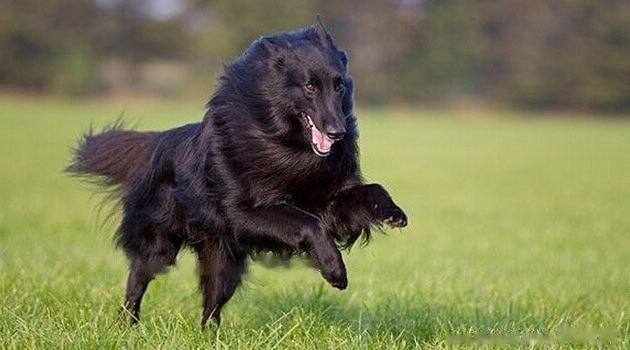Originating in Belgium in the 13th century, the Groanda is the most widely recognized of the three Belgian sheepdogs. The main differences between the three Belgian Sheepdogs are the type, length and color of the coat. The Groanda is a long-haired pure black breed. The other two types: Lacanos, Wirehaired; Malinois, Shorthaired. There is also a Teflon that is considered a variant of the Groanda, the difference being the color of the fur. The aforementioned Belgian Shepherds have a unified ancestor.

1. Introduction to the Groanda dog
The breeding of the Groanda dog was rather accidental. A local cafe owner in Luanda bought a pair of black puppies that became the basis for the breed. The British Kennel Club recognizes all four of the above, while the American Kennel Club does not currently recognize the Lacanus, and the remaining three are recognized as three different breeds. The Federal Kennel Club of America recognizes four types as one breed. The purpose of this dog is shepherding, and it is a very good shepherd dog.
2. Characteristics of Groanda dogs
Body size: Groanda dogs are 56-66 cm tall and weigh about 28 kg. Belongs to the large dog shepherd.
Head: The top of the head is slightly flat, approximately equal in width and length. Eyes brown or dark brown, medium in size, slightly almond shaped, not prominent. Eyes show intelligence, questioning, alertness, and concern. The ears are triangular in shape, erect, and in proportion to the head. The muzzle is slightly pointed and roughly equal in length to the skull. The jaws are strong and powerful. The nose is black with no smudges or fading. The lips are tight, black, and pink not visible from the outside. Teeth are completely white and strong.
BODY: Neck arched and outstretched, well muscled, skin taut. The topline is straight and firm; the chest is not broad, but rather deep, reaching to the elbows. The loin, viewed from above, appears short, broad, and strong, smoothly joining the back. The croup is of medium length, gradually sloping. Strong at the base of the tail. When resting, the tail is drooping, and when moving, the tail is slightly rolled up and strong at the end.
Coat: The outer coat is long, straight and thick. The texture is medium to coarse, with a very thick undercoat, adaptable to all climatic conditions. The coat color is black, pure black or black with white markings. White markings are limited to the following: a small to moderate number of white fragments, stripes on the chest. White between the pads and toes, white on the toes of the hind paws, and white on the muzzle and chin.
Limbs: The hind legs are well proportioned in length and texture to overall size, with oval rather than round bones. The two hind legs are parallel to each other. The thighs are broad and very muscular. The hind paws are slightly longer, with well arched toes and thick pads. Nails are strong and black.
![[Dog Training 5] The training method of pet dog dining etiquette](/static/img/12192/12192_1.jpg)




